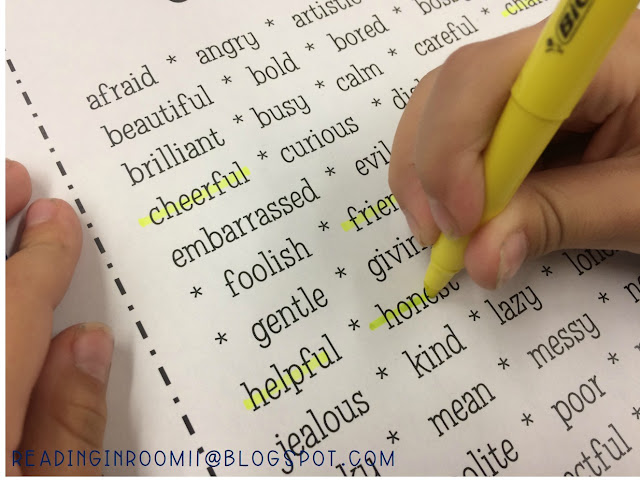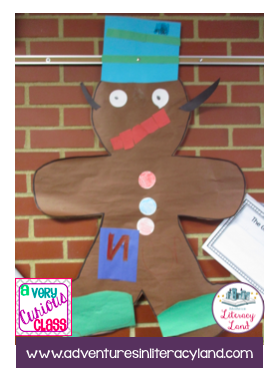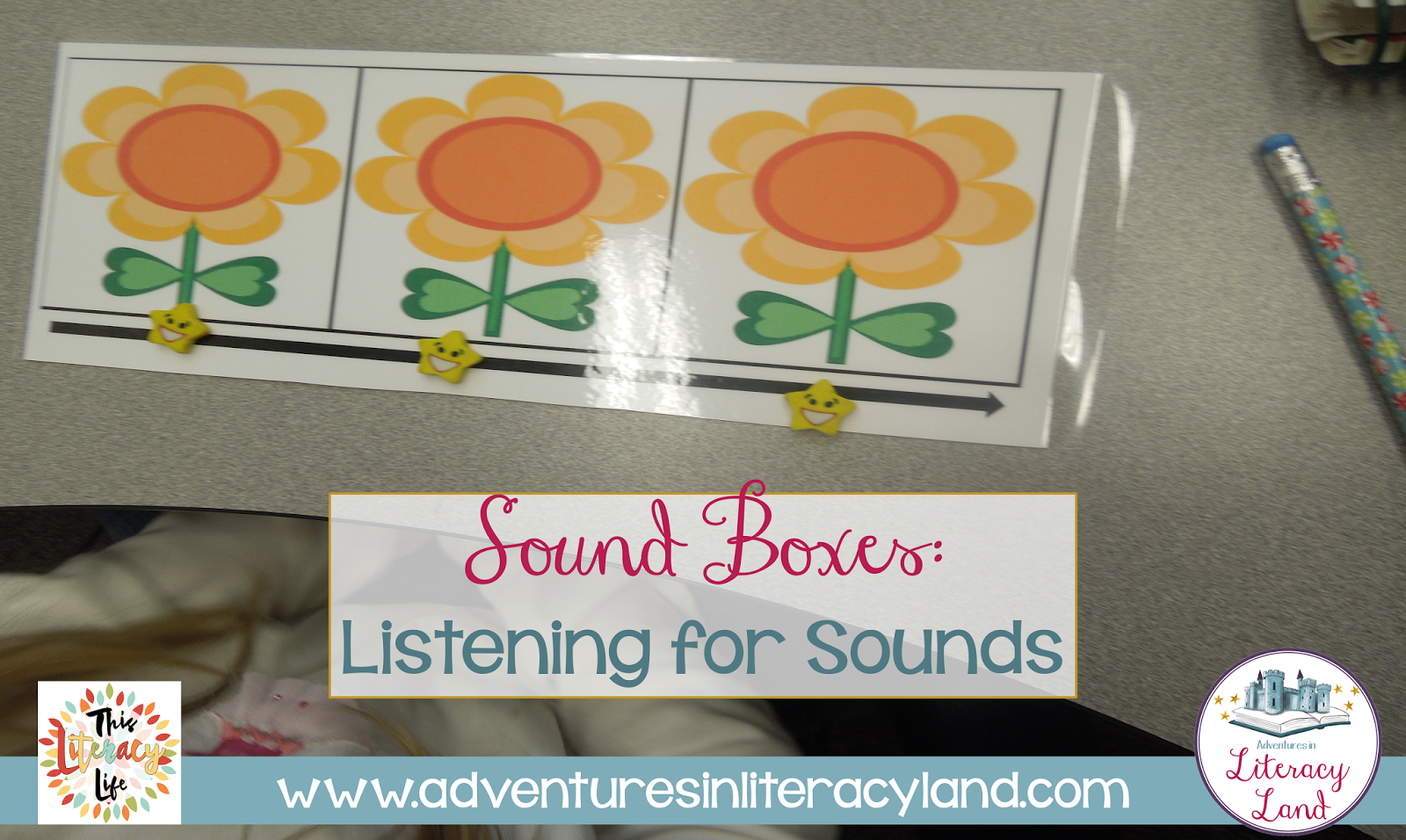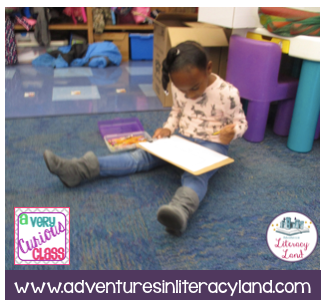How many times have you asked a student to describe a character and they start making a list of their eye color, hair color, etc.? Or perhaps they say my all time favorite answer: nice. Here are some ways that you can start getting students to dig deeper!
These resources are available in a free download.
Inside/Outside:
The first step is to explain the difference between inside and outside characteristics. Choose a character and use this template to work through the character traits. Start with the easiest: outside. Students can make a list on the outside of physical characteristics like eye color, hair color, height, or type of animal. Then you can turn your attention to the inside.
Word Lists:
The inside characteristics/traits can be difficult for students to come up with independently. You can always give examples from the book.
This great word list is from Colleen at Totally Terrific in Texas.
I love to go through these lists with students and highlight all of the words that might describe the character. Then we go through and choose the words that are the best fit.
I often have students keep a copy of these lists in their folders to refer back to when they are answering questions independently.
Student Character Traits:
Now for my favorite activity - having classmates describe each other. I printed out a list for each student and had them write their name at the top. Then we took turns passing the papers around each student highlighted one positive character trait of that person. We kept passing the paper until everyone highlighted a trait for each student.
I took the results and created a wordle for each student. I have also put a student's picture in the middle of a piece of blank paper and students have taken turns writing a positive trait on the paper.
Personal side note: This can be an incredible moving and rewarding activity. I teach small groups of students receiving Tier 2 and 3 support and their confidence is often affected by their academic struggles. I have done this with 1st graders through 5th graders and the results are always heartwarming. I love seeing the looks on their faces as we read the positive things their peers had to say about them!
I hope that you find these ideas helpful to you and your students! Please let me know in the comments if you have any questions or other helpful ways to teach character traits!
Click HERE to download the Inside/Outside Character Trait Printable as well as the word lists.
Pin for later:





































